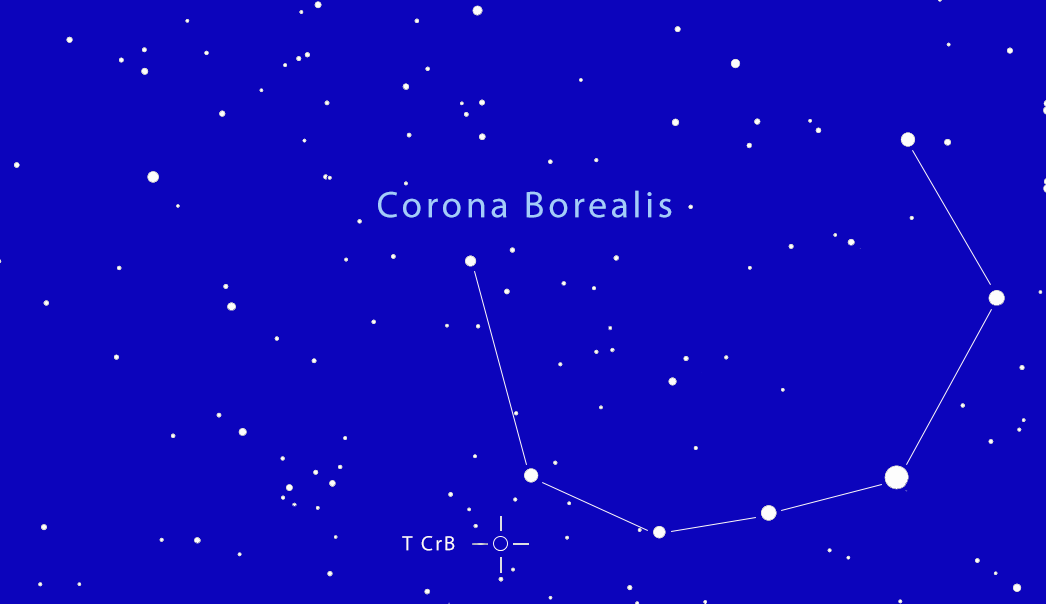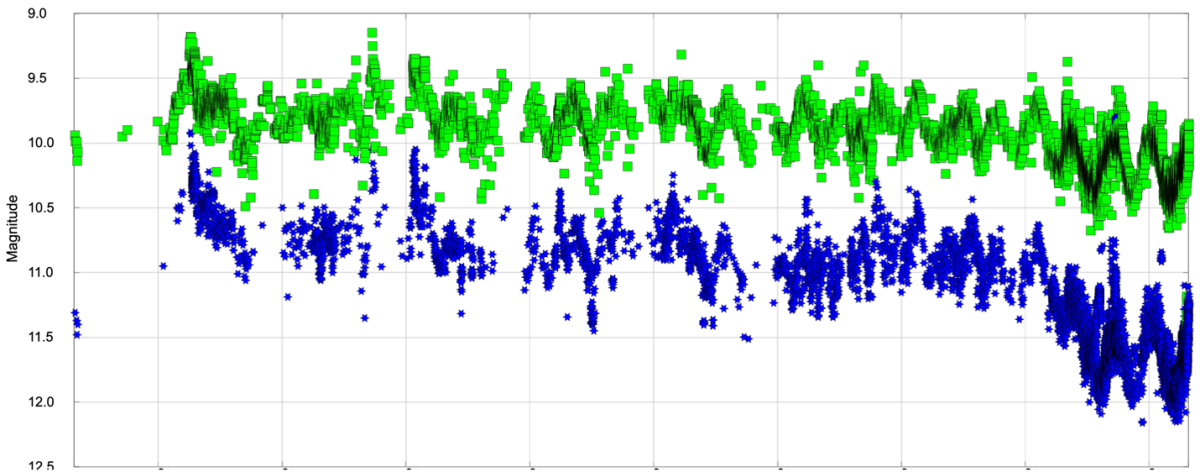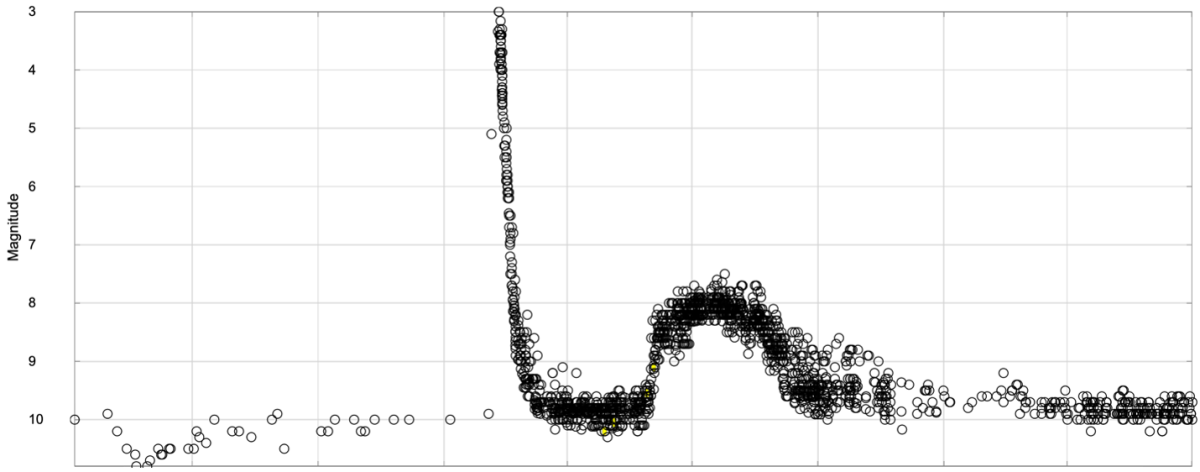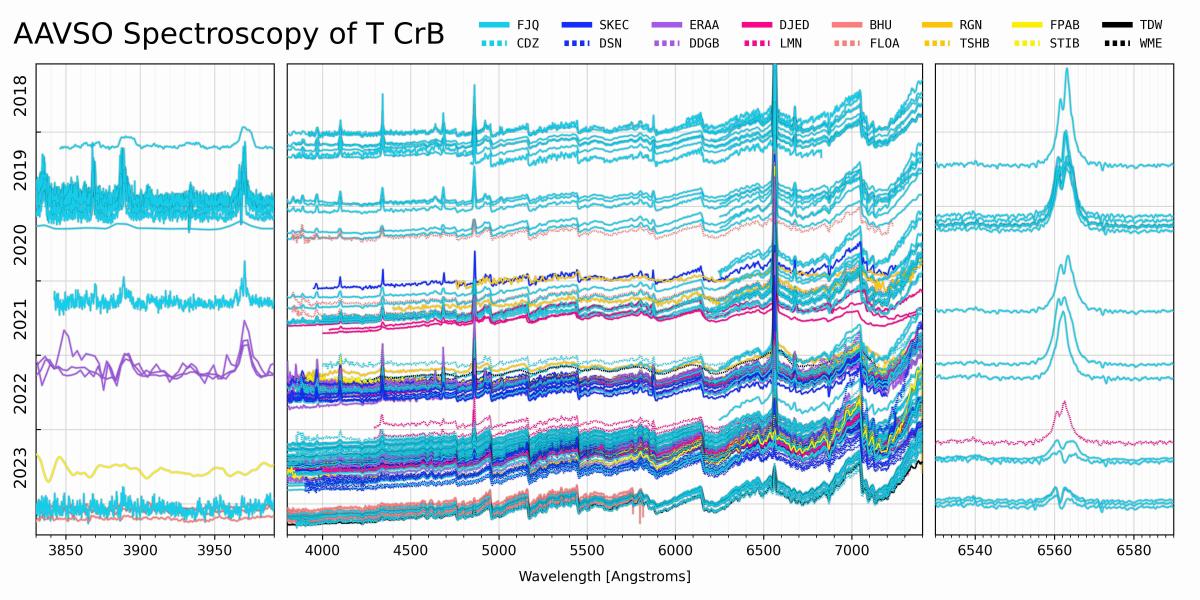
It’s been 78 years since T Coronae Borealis’ last outburst. Astronomers are gearing up for the Blaze Star’s next show. | By Tim Lyster
Spread across an area of 179 square degrees, Corona Borealis is small—it appears 73rd on the list of 88 constellations by size—and relatively dim. There are no Messier objects within its boundaries and it boasts just four stars greater than third magnitude. Yet despite its diminutive nature, the twinkling circlet forms a recognizable asterism in northern skies and contains several objects of interest. One of these lies one degree south of epsilon: T Coronae Borealis, a recurrent nova predicted to brighten to naked-eye visibility sometime between now and September. Astronomers, both amateur and professional, are watching.
Lying some 3,000 light years away, T CrB is a binary system, in which material shed by a red giant falls to the surface of an orbiting white dwarf. As the amount of the material increases, it creates a thermonuclear runaway event that manifests as a nova.
T CrB’s Variability
Typically hovering around magnitude 10, T CrB’s outbursts have been definitively recorded on two prior occasions in recent history—the first on May 12th, 1866, where it reached second magnitude and briefly became the constellation’s brightest star; and then eight decades later, on February 9th, 1946, when it peaked at magnitude 3.0.
If T CrB was to follow the same timing, the next brightening is predicted to happen around 2026, 80 years after the 1946 peak. But recent events have accelerated that schedule. In February 2015, the star brightened by about three-quarters of a magnitude and became bluer. It grew brighter still in early 2016, staying brighter than normal for the next seven years. Then, a year ago, the AAVSO announced that T CrB had entered its “pre-eruption dip:”
“A distinct and under-appreciated close-up harbinger [for an upcoming eruption] is the unique and mysterious Pre-eruption Dip (Schaefer 2023). The Dip in 1945-1946 started around 1945.0 (1.1±0.3 years before the 1946 eruption), with the B-band magnitude fading from near 10.5 to 12.0 mag, while the V-band magnitude faded from around 9.8 to 12.3 magnitude.”
![]() Like this content? Want to see more? Support AAVSO’s day-to-day operational needs with a tax-deductible contribution.
Like this content? Want to see more? Support AAVSO’s day-to-day operational needs with a tax-deductible contribution.
The paper continues: “The fading in the blue was 0.4 mag in 2023.3 to 0.8 mag in 2023.5. The fading in the V-band was 0.25 mag in 2023.3, and 0.35 mag in 2023.5. The fading in the R and I bands are substantially smaller. This color dependency in the fading is consistent with increasing dust absorption, for a scenario featuring a recently discrete mass ejection in which dust formation occurs (much like for R CrB stars).”
So, the photometric data collected by AAVSO observers indicated that the dip was underway, and if it mirrored that of the previous one in 1945, the eruption could happen between January and August 2024.
We are now almost five months into that window, and telescopes across the globe are trained on T CrB, observers eager to be the first to see the early signs of the star’s next outburst.
AAVSO Observations: Yearly Totals
The number of T CrB observations submitted to the AAVSO exploded in 2023, quadrupling from the prior year. This year promises an even greater haul, as the year-to-date total sits at more than 26 thousand (as of May 2). Observations capturing the rapid brightening phase will help researchers refine our understanding of the processes happening within the binary system.
| Year | Observations | Observers |
| 2015 | 2,080 | 107 |
| 2016 | 6,426 | 215 |
| 2017 | 3,330 | 131 |
| 2018 | 3,303 | 123 |
| 2019 | 3,382 | 116 |
| 2020 | 4,287 | 131 |
| 2021 | 4,370 | 144 |
| 2022 | 5,030 | 120 |
| 2023 | 20,490 | 192 |
| 2024 | 26,360 | 160 |

Figure 1: B and V Light Curves of T CrB, plotted from April 27, 2015 through April 26, 2024. Courtesy AAVSO LCG.



